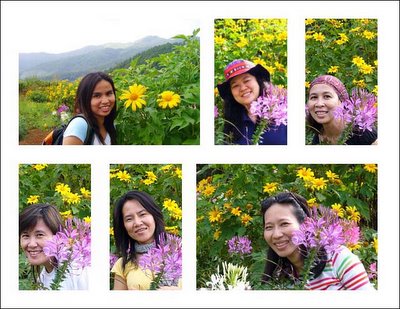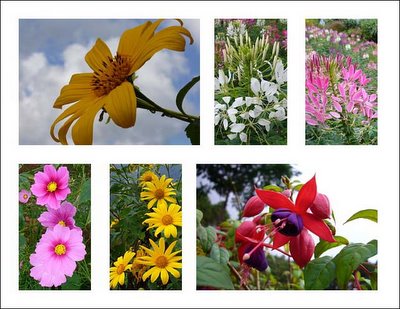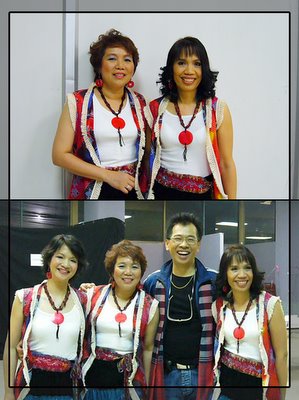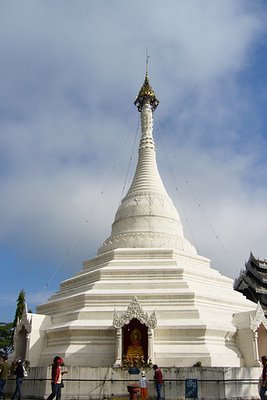


A long day is waiting for us, so we say good bye to Mae Hong Son with a promise from some of us that a re-visit to this province is a must to do thing in her traveling calendar.
Another famous attraction of Mae Hong Son on the other route back to Chieng Mai is the “Dok Bua Tong” bloom festival. The Dok Bua Tong (may be classified as wild sunflowers) blooms during November painting the entire hilly area of Doi Mae U-kho in brilliant yellow draw flocks of visitors to Khun Yuam district. Though, it’s kind of late for us, we still hope to see some.
And again the twist road is waiting for us, a nightmare for me!! All kinds of motion sickness relieving are used, but it doesn’t help much. Considering to take a medicine bought before this trip, we pass by a flower field. Entrance is Baht 5 per person. We spend at least half an hour in those beautiful field taking pictures of ourselves and flowers. A perfect nature cure powers because motion sickness is effectively relieved. :-)











